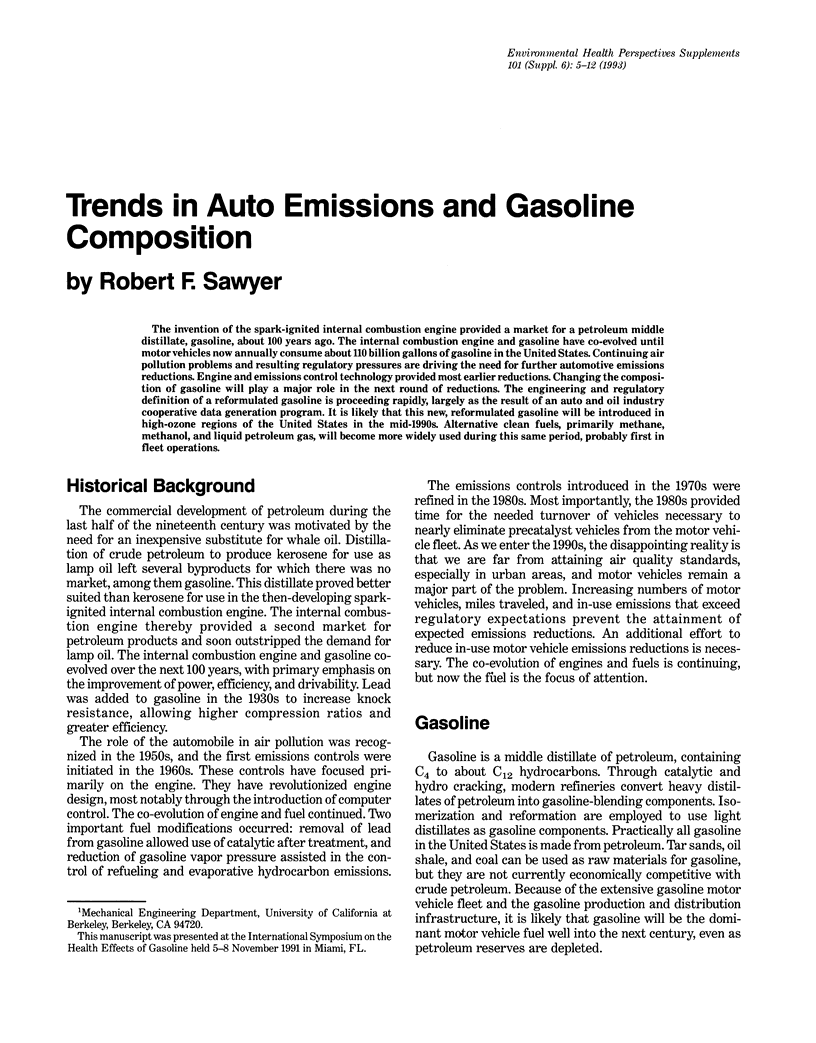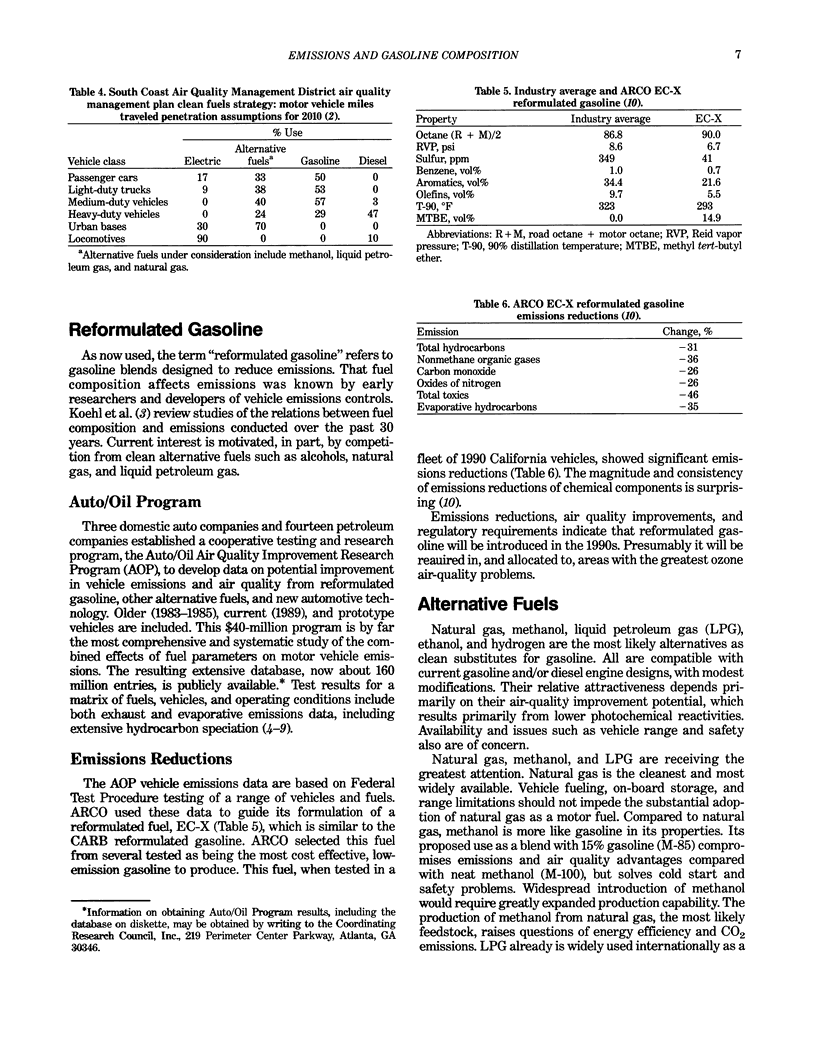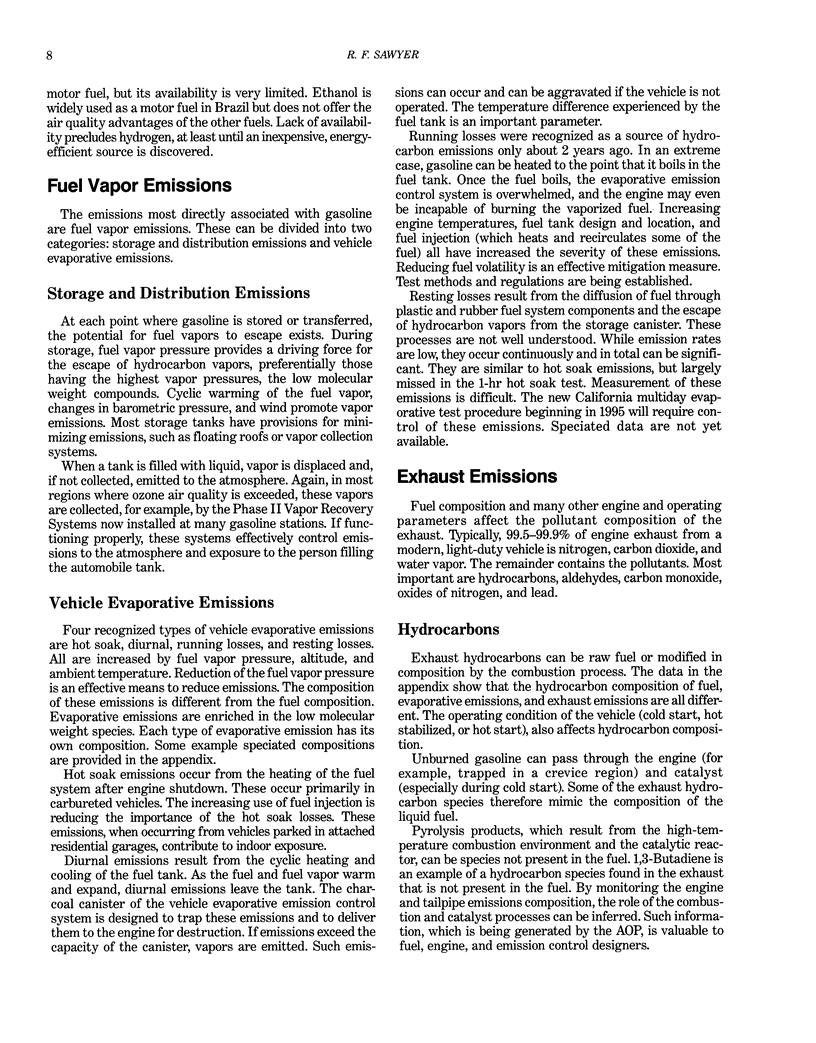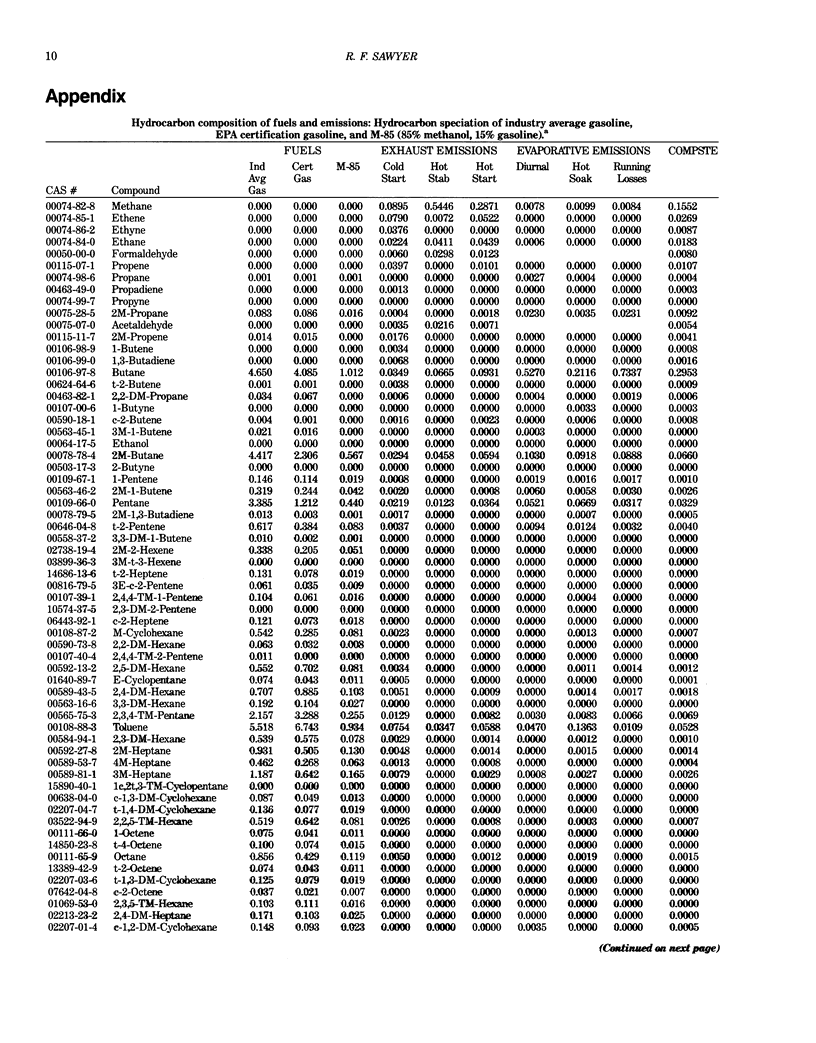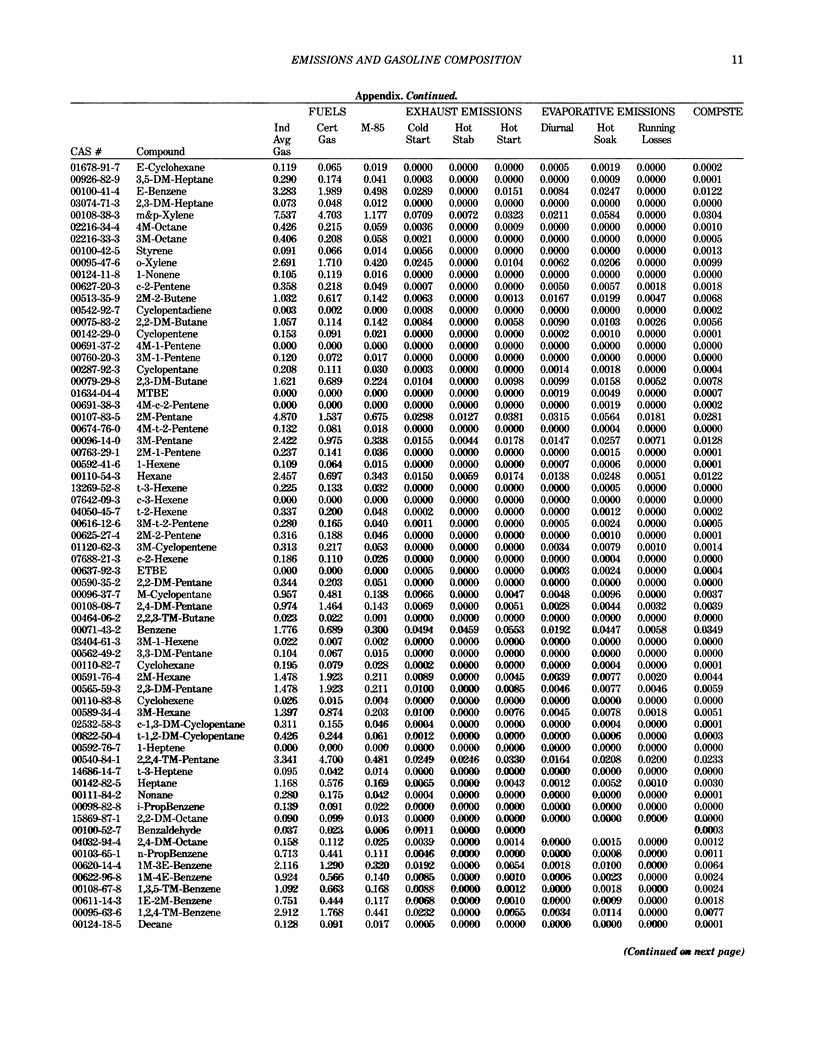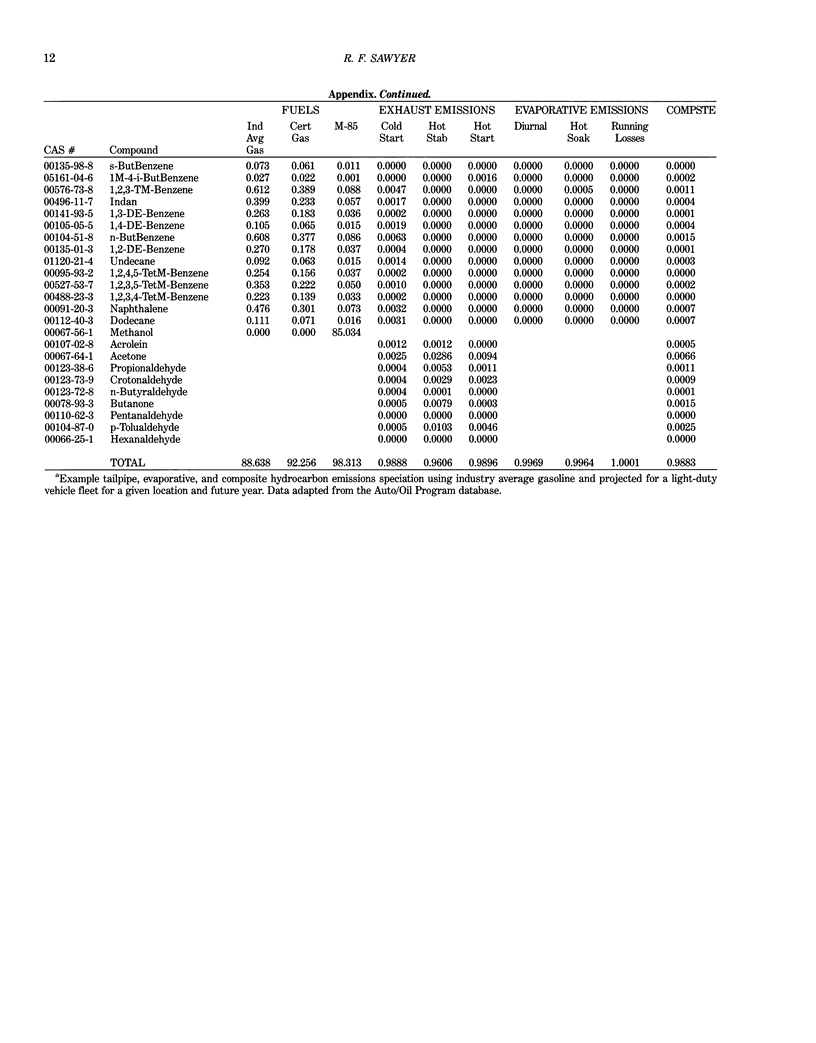Abstract
The invention of the spark-ignited internal combustion engine provided a market for a petroleum middle distillate, gasoline, about 100 years ago. The internal combustion engine and gasoline have co-evolved until motor vehicles now annually consume about 110 billion gallons of gasoline in the United States. Continuing air pollution problems and resulting regulatory pressures are driving the need for further automotive emissions reductions. Engine and emissions control technology provided most earlier reductions. Changing the composition of gasoline will play a major role in the next round of reductions. The engineering and regulatory definition of a reformulated gasoline is proceeding rapidly, largely as the result of an auto and oil industry cooperative data generation program. It is likely that this new, reformulated gasoline will be introduced in high-ozone regions of the United States in the mid-1990s. Alternative clean fuels, primarily methane, methanol, and liquid petroleum gas, will become more widely used during this same period, probably first in fleet operations.
Full text
PDF